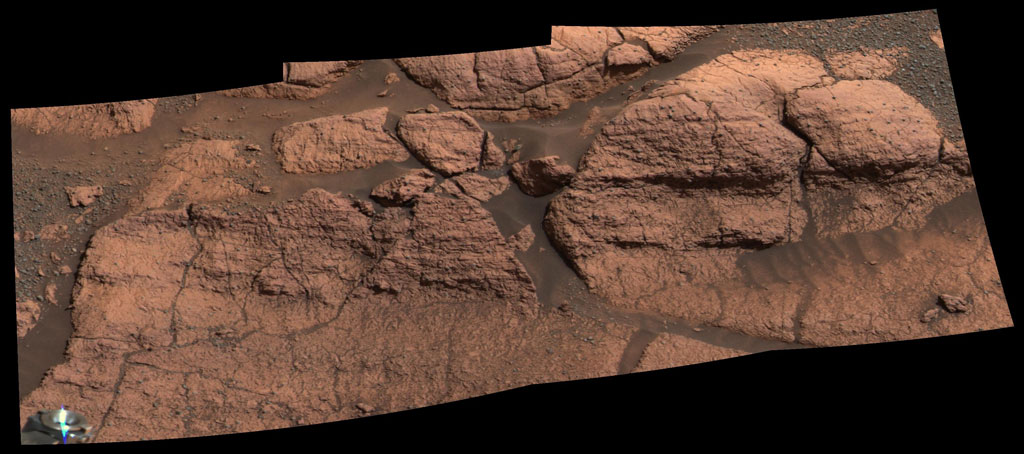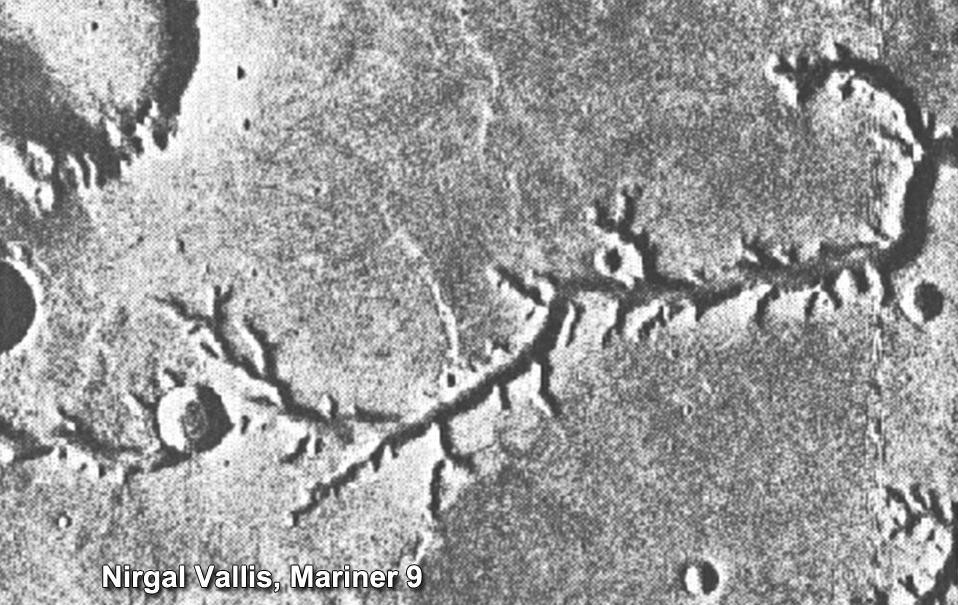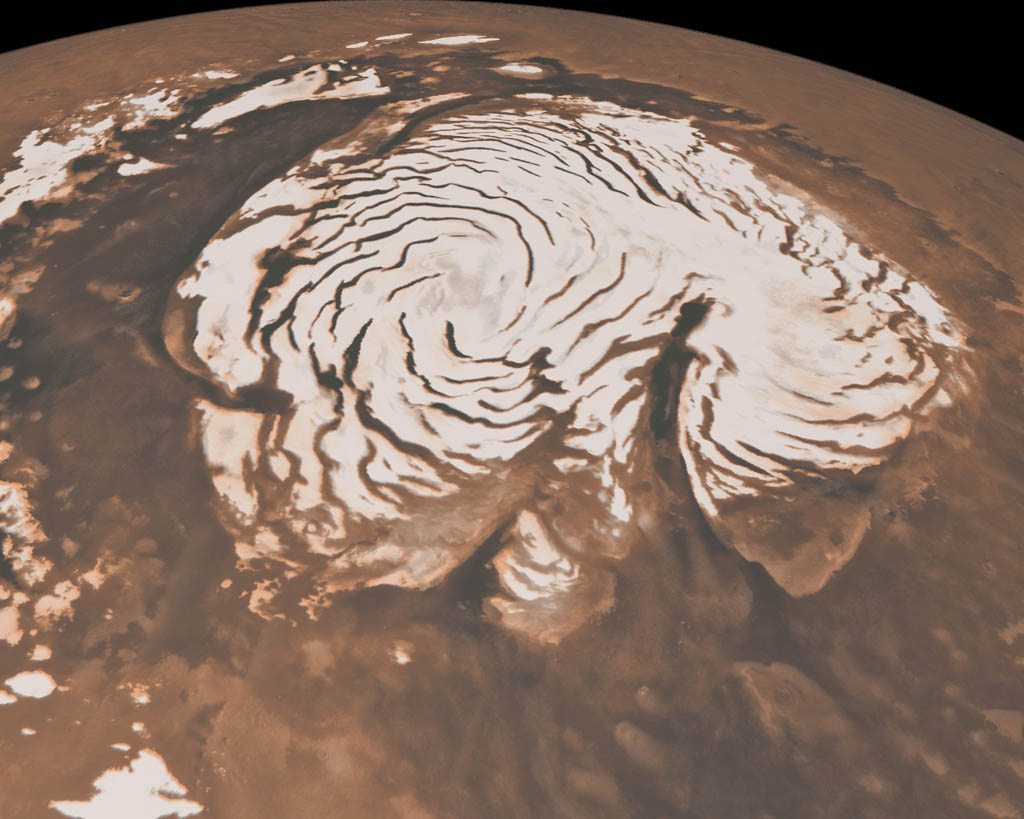We know that there is a lot of water on Earth, but what has Curiosity discovered about water on Mars?

NASA/JPL-Caltech/Cornell
Research Exercise
The NASA web-page at the following link gives information about some of Curiosity’s discoveries. Use the information to write a list of evidence to show that water may be present on Mars, or was in the past.
Read about the discoveries >There is evidence to show that there may have been liquid water on Mars sometime during the past. This photograph of the Nirgal Vallis on Mars looks very much like a river with tributaries (smaller rivers running into the large river), but there is no liquid water in them now.

NASA/JPL-Caltech
However, scientists believe that there is still water on Mars, but because the average temperature on the planet is -55 ̊C, any water that is present would be in the form of ice.
The evidence from Curiosity and other space probes indicates that there is a lot of ice on Mars, especially at the poles of the planet (ie. top and bottom of the planet). This image shows the north pole of Mars, and was taken by NASA’s Mars Global Surveyor space probe:

NASA/JPL-Caltech/MSSS
More Information!
Astronomers believe that there is water in other parts of our solar system, including moons of Jupiter called ‘Europa’ and ‘Ganymede’, and a moon of Saturn called ‘Enceladus’. Read more about this at:
Find Out More >When you are living on Mars, you and your fellow-astronauts will need a supply of clean drinking water, and the polar ice-caps could be a good source.
The ice on Mars may not consist of pure water. It may contain dust, stones, and other deposits, and it may also contain chemical substances such as common salt.
How could you purify the water from the polar ice to make sure it was safe enough to drink? You can answer this question by carrying out the water purification practical exercise.